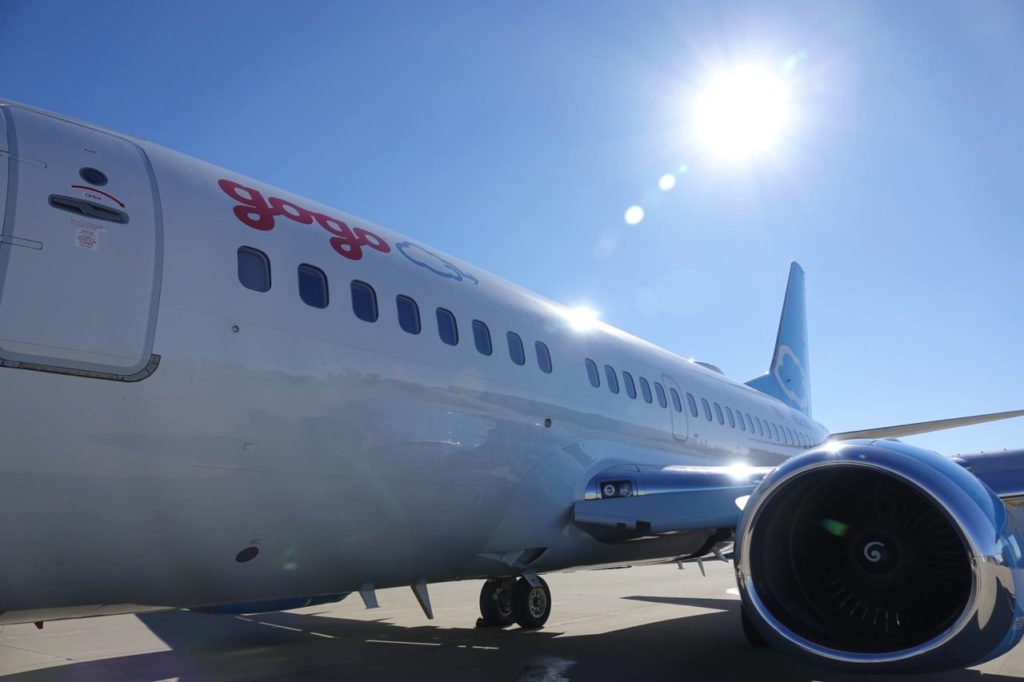
Gogo’s test plane, the Jimmy Ray. Photo: Gogo
How many of you used Wi-Fi on a recent flight?
If you’re like the audience at SATELLITE 2019’s on in-flight connectivity (IFC), a lot of you.
How many of you were satisfied with that experience?
If you’re like the audience, only a few of you.
“More than I expected,” quipped Gustavo Nader, Thales’ vice president of strategy for InFlyt Experience.
Neither Nader nor any other member of the panel, which included connectivity service providers and airline representatives, had kept their hands up for the second question.
“When connectivity made it to airplanes in the early 2000s, passengers would be happy to have connectivity at all,” Nader said at the Washington, D.C. convention. “Because it didn’t exist before, even if it was sub-standard, it was acceptable… The pace of evolution over the last decade on passenger expectations hasn’t equally been met yet by the connectivity providers. We’re bridging that gap.”
Passengers are looking for an experience similar to what they have on the ground, at home or at work. That means availability, reliability, speed and ease of use.
“It sounds basic, but the number one dissatisfier to a user is if it does not work consistently well,” said Gogo executive vice president Jonathan Cobin in an interview. “If there’s an expectation of service and it wasn’t working, that is the biggest [problem.]”
In an attempt to solve that, Gogo is not only putting effort into bulking up its 2ku network where capacity needs are the greatest with an emphasis on redundancy, but its exploring options to empower the airlines with more troubleshooting techniques, Cobin said. Right now, if the Wi-Fi is down, the Wi-Fi is down. There’s no IT staff onboard to go work on a router, trying to restore service; the flight attendants just need to sound as apologetic as possible and hope it doesn’t anger passengers too much (which, according to Southwest Airlines’ Tara Bamburg, it does).
Cobin said Gogo is exploring ways to give the flight crew tools to troubleshoot small issues and inform them about problems — think connectivity bars — but not “turn them into an IT staff.”
“Them just saying ‘There’s a problem and I can’t tell you anything about it,’ or making something up is not good either,’” he said, so the airlines are happy to give more information to the flight attendants.
That was a bit of a theme on the panel: Southwest is exploring ways to leverage airborne connectivity and internet of things (IOT) into operational advantages. To wit, the airline wants to put information into flight attendants’ hands about passengers’ connections, so they know who is dealing with what as delays pile up and can triage stress accordingly. Currently, they just have to find that out and deal with problems in real time, said Bamburg, manager for in-flight Wi-Fi and entertainment at Southwest, and arming them with that information ahead of time could smooth the process.
Delta also wants to find ways to synergize its connectivity investments, but Director of Supply Chain Management Technology Hamp Haucke said figuring out how is a challenge.
“The IOT piece of it is there and picking up steam,” Haucke said, but added that in the “nascent stages at the operator. “Right now, we don’t have a good sense of how to prioritize data usage,” he said.
While the representatives from Southwest, Delta and Lufthansa all said they’re interested in leveraging aircraft IOT to improve operational efficiency and save money, the current focus is clearly on the passenger experience.
Southwest made “a huge shift internally to focusing on the customer experience,” Bamburg said. “If you have flown with us, you probably saw quite a few Chase ads,” Bamburg said. “But, if you already have [that credit card], you don’t really need to be seeing that. Maybe we can start personalizing those ads more… better extending who we are as a brand.” She suggested ads that reflect a passenger’s destination.
Both Southwest and Delta are exploring how to tailor the in-flight entertainment and advertising experience.
Haucke said that senior leadership is very engaged in discussions about how to personalize content at Delta — the leading philosophy is a passenger opt-in that allows the airline to tailor its experience and show or send things it believes you will be interested in.
They do need to tread lightly; users are sensitive to obtrusive ads or privacy infringement and airlines don’t want to sour the experience.
“If someone uses IFC and has a negative experience, it is pretty clearly negatively expressed in their [Net Promoter Scores] (NPS), and that has a negative impact on the Southwest bottom line,” Bamburg said. “On the other hand, if they have a good experience with a movie, that drastically improved their NPS and that is what enabled us to offer them free movies.”